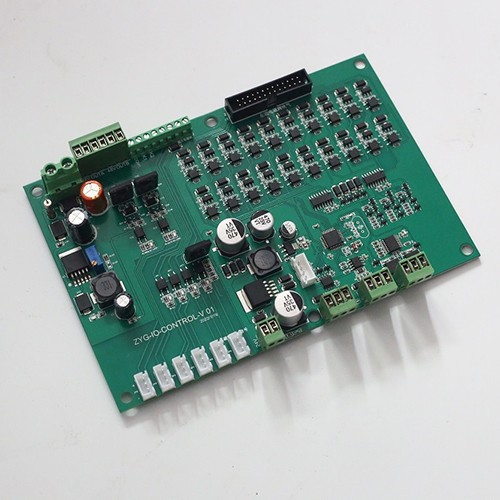PCBA SMT patch processing
PCBA SMT patch is a surface mount technology (Surface Mount Technology) in Printed Circuit Board Assembly.
PCBA SMT patch process:
1. It is necessary to prepare the PCB board that meets the requirements, which includes the design, manufacture, cutting, drilling and other preliminary work of the PCB.
2. Component preparation: According to the circuit design requirements, prepare the corresponding electronic components and check to ensure that their quality and performance meet the standards.
3. Solder paste printing: Print a thin layer of solder paste on the pad of the PCB to prepare for subsequent welding.
4. Component placement: Use a high-precision placement machine to accurately place electronic components on the specified position of the PCB.
5. Reflow soldering: Place the PCB with mounted components into the reflow soldering oven, heat it to melt the solder paste and fix the components to achieve electrical connection.
6. Quality inspection: Use automatic optical inspection equipment (AOI) to check the soldering quality to ensure there are no quality problems such as leaking soldering and cold soldering.
7. Repair and packaging: Repair the defective products detected, and package and store the qualified products.
PCBA SMT patch process:
1. It is necessary to prepare the PCB board that meets the requirements, which includes the design, manufacture, cutting, drilling and other preliminary work of the PCB.
2. Component preparation: According to the circuit design requirements, prepare the corresponding electronic components and check to ensure that their quality and performance meet the standards.
3. Solder paste printing: Print a thin layer of solder paste on the pad of the PCB to prepare for subsequent welding.
4. Component placement: Use a high-precision placement machine to accurately place electronic components on the specified position of the PCB.
5. Reflow soldering: Place the PCB with mounted components into the reflow soldering oven, heat it to melt the solder paste and fix the components to achieve electrical connection.
6. Quality inspection: Use automatic optical inspection equipment (AOI) to check the soldering quality to ensure there are no quality problems such as leaking soldering and cold soldering.
7. Repair and packaging: Repair the defective products detected, and package and store the qualified products.
- Previous:没有了
- Next:PCBA SMT patch processing





